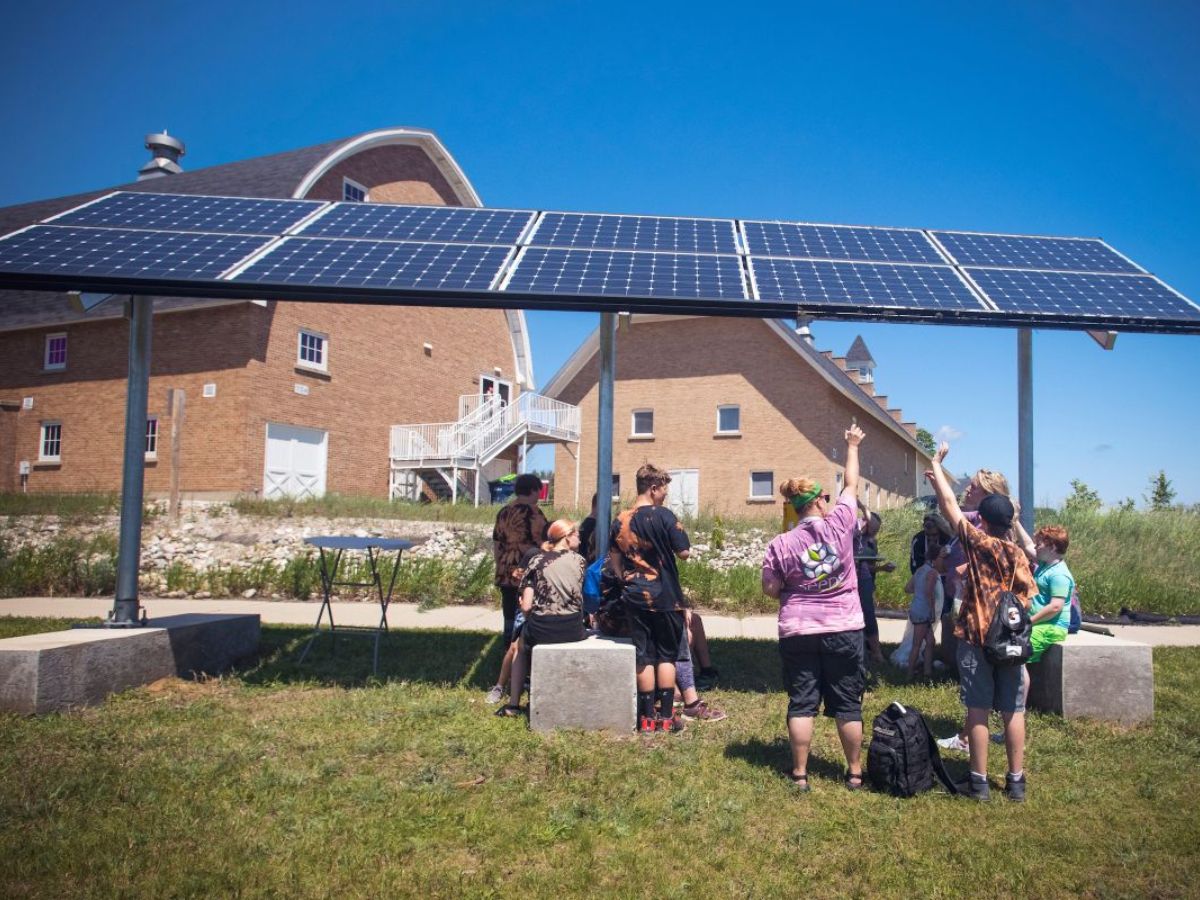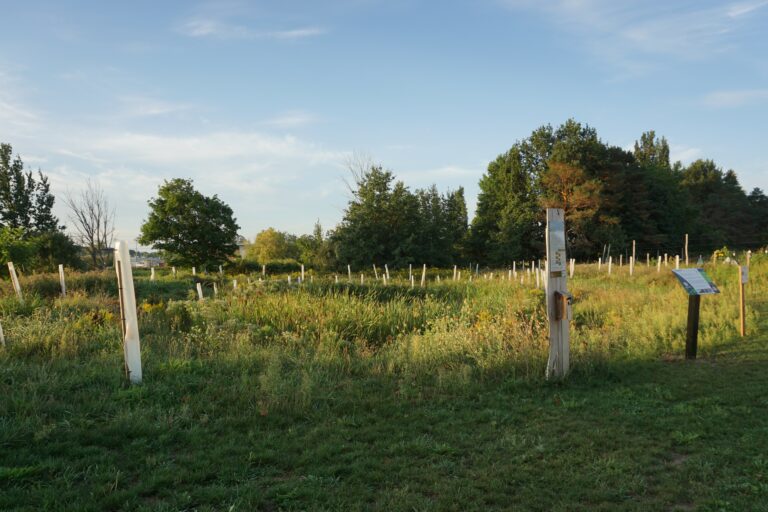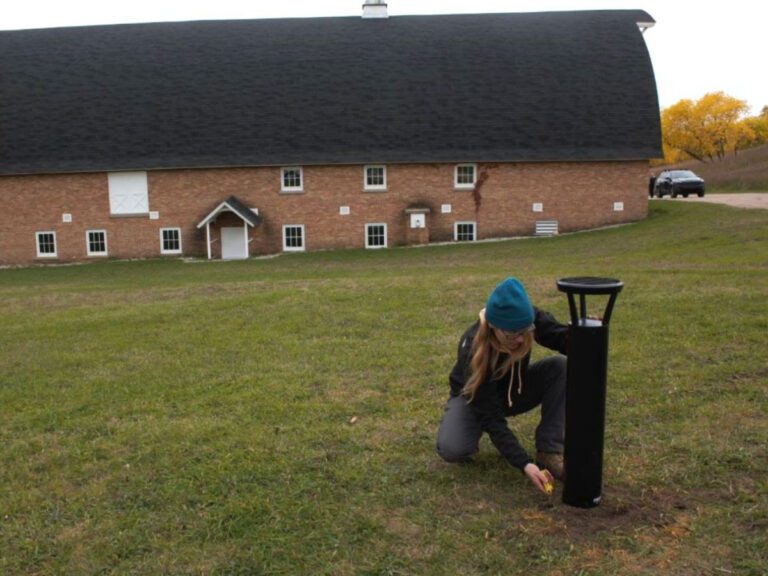SEEDS Ecology & Education Centers and its park partners are proud of the energy efficiency, conservation, and renewable technology measures already taken. A growing number of exhibits and activities help visitors learn about energy and carbon, just by walking the public trails.
Solar
A solar array was installed in 2015 to power the irrigation systems for the SEEDS Farm and the Community Gardens. The system is grid-tied without a battery backup. Extra electricity is fed back into the grid and offsets the electricity used by the Cathedral Barn. Panels are scalable to twice the original installed size, which means that we could double the number of panels without making any other upgrades to the system.
Geothermal
The Earth itself can be used as a renewable source of heating and cooling for buildings. By working with nature and using heat pump technologies, a geothermal system moves energy from underground to the Historic Cathedral Barn, providing heat in the winter and cooling in the summer. In regions with temperature extremes, such as Northern Michigan, geothermal heating and cooling is considered energy efficient and environmentally friendly.
Sixteen loops of underground piping, each 200 feet long, run underneath the garden to the basement of the barn. These plastic pipes are filled with antifreeze, or refrigerant, and are buried below the frost line, where the temperate is a constant 42 to 47 degrees all year long. Inside the Cathedral Barn a heat pump uses the physics of compression and thermodynamics to move heat between the Earth and the barn. While heat pumps do use electricity, there is no direct combustion and so no direct production of emissions linked to pollution, climate change, or other environmental hazards. For every single unit of energy powering this geothermal system, four units of energy to heat or cool the building are generated!
Zero Waste
SEEDS Ecology & Education Centers is committed to an organization-wide target of Zero Waste to landfills for all our programs. Zero Waste is a process, goal, and philosophy that involves a redesign of products and consumption, so that all material goods can be reused, recycled, or not needed at all. Zero is an ambitious goal and we are always practicing to get closer to that goal each year. Zero Waste is one of the top ten strategies for greenhouse gas emission reductions at Historic Barns Park.
Each year Americans add 169 million tons of trash to landfills. Responsible waste management practices and purchasing choices make a difference. For example, every ton of mixed paper recycled can save the energy equivalent of 166 gallons of gasoline. Not purchasing that paper to begin with makes an even bigger impact because no raw materials or energy are used to produce it, no fuel is used to transport it, and no energy or fuel is used to haul or recycle it at the end of its life.
Carbon Drawdown
In a fully built-out scenario for the Park, based on business-as-usual plans, the Park and its events will be responsible for about 900 Metric Tons of CO2 equivalents, which is equal to the greenhouse gas emissions of 193 passenger vehicles driven for one year. It would take 1060 acres of United States forests one year to sequester that much carbon. SEEDS Ecology & Education Centers is dedicated to helping the Park plan to reduce its carbon footprint through building efficiencies, smart waste management, renewable technologies, landscape management, and transportation planning.





